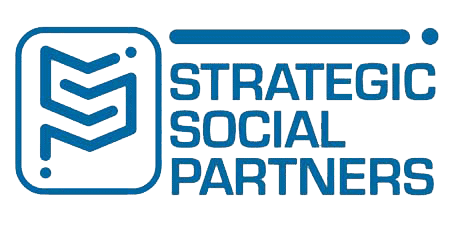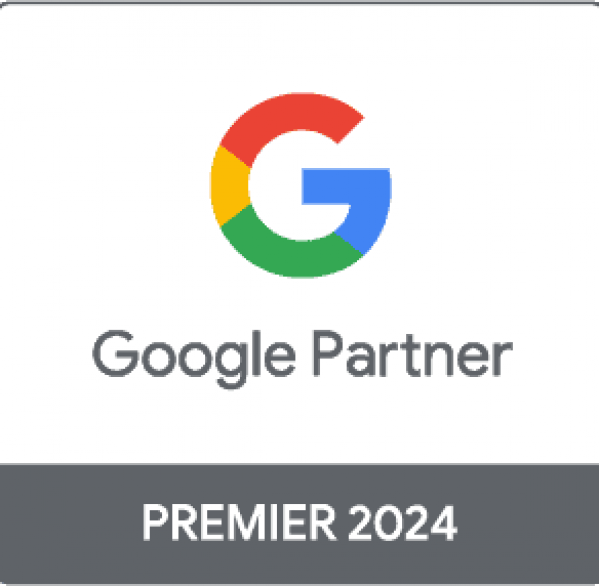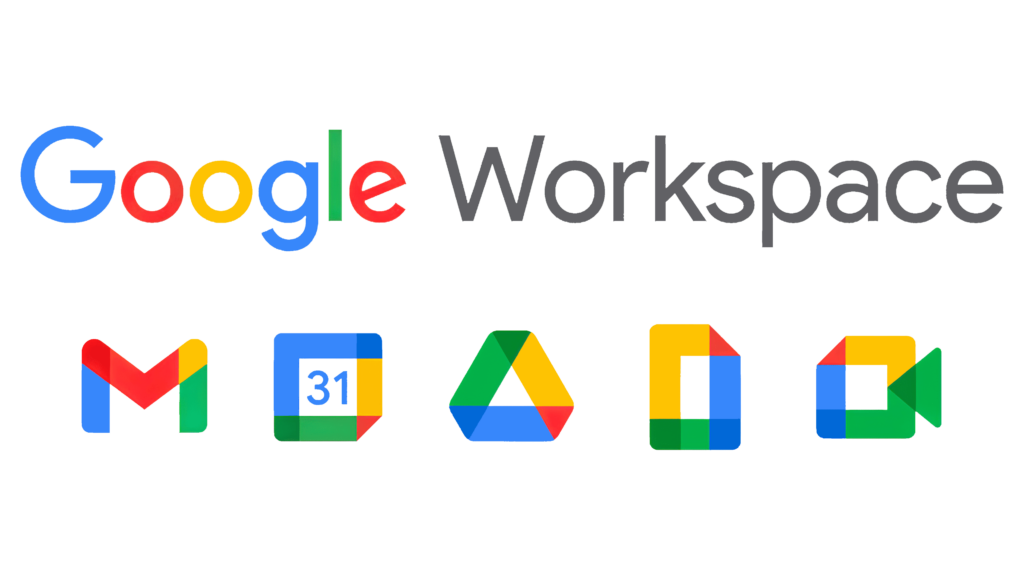In a recent episode of “E-Coffee with Experts,” host Ran invited Nathan Hawkes, President of Arcane Marketing, to share invaluable insights on leveraging segmentation and AI integration to elevate ROI in digital marketing.
He emphasizes how dissecting the target market into more manageable and targeted segments allows marketers to craft personalized campaigns that resonate with specific demographics. This, in turn, not only enhances customer engagement but also significantly boosts the effectiveness of marketing endeavors. Let’s dive in.

Understanding The Importance Of ROI In Business
In the ever-evolving landscape of business, the paramount importance of boosting Return on Investment (ROI) cannot be overstated. An enhanced ROI serves as the veritable lifeblood of organizational sustainability and growth, transcending mere financial metrics to embody a holistic measure of success. It is the linchpin that aligns strategic initiatives with tangible outcomes, fostering a dynamic equilibrium between resource allocation and revenue generation.
Beyond the numerical benefit, a robust ROI signifies operational efficiency, optimal utilization of resources, and the ability to adapt to market dynamics. As businesses navigate the complexities of today’s competitive milieu, an unwavering focus on boosting ROI emerges not merely as a financial objective but as a strategic imperative—one that empowers enterprises to thrive in an environment where resilience and adaptability are synonymous with success.
Introduction To Segmentation: Paid Search
Segmentation, in the world of marketing, is the strategic process of dividing a broad target market into distinct and homogeneous groups based on certain shared characteristics, behaviors, or demographics. This nuanced approach enables businesses to tailor their marketing strategies more precisely, addressing the unique needs and preferences of each segmented group.
Segmentation recognizes that not all customers are the same and that a one-size-fits-all approach may not be optimal. By categorizing the audience into segments, businesses can create targeted and personalized campaigns, optimizing resource allocation and increasing the overall effectiveness of their marketing efforts. The goal is to enhance relevance, engagement, and ultimately, customer satisfaction by aligning products or services with the specific demands of each segment.
Successful segmentation is a cornerstone of modern marketing, fostering a deeper understanding of the diverse dynamics within a market and allowing businesses to connect with their audience in a more meaningful and impactful way.
The Importance Of Segmentation In Paid Search

Embarking on a journey through the multifaceted realm of digital marketing, one cannot overlook the important role that segmentation plays in orchestrating success. Nathan Hawkes articulates the profound impact of segmentation in the context of paid search campaigns. The essence lies in the meticulous art of narrowing down ad groups to a granular level, a strategy that has proven instrumental in catapulting Arcane Marketing’s clients to new heights of success.
He underscores the strategic importance of focusing on one to two keywords per ad group, unraveling a secret sauce that yields elevated quality scores, reduced costs per click, and an augmented return on ad spend. Segmentation, therefore, emerges not merely as a technicality but as the linchpin of marketing efficacy, where precision and relevance converge to sculpt campaigns that resonate and deliver tangible value.
Understanding segmentation isn’t just about dividing audiences; it’s about sculpting an approach that harmonizes with the intricacies of consumer behavior, crafting a narrative that transcends the digital landscape and resonates with the heartbeat of the target audience.
The Crucial Role Of Landing Pages: Post-Click Optimization
In the dynamic landscape of paid search, the pivotal role of landing pages cannot be overstated, and Nathan emphasizes the significance of post-click optimization. According to him, the journey initiated by a click doesn’t culminate there; rather, it extends to the user’s landing page experience. In his strategic approach, he underscores the need for tailored landing pages that align precisely with the chosen keywords and ad content. This post-click optimization strategy is a logical extension of the segmentation tactics employed in ad groups.
Nathan advocates for the creation of unique landing pages for each ad group, a practice that goes beyond mere customization—it maximizes relevance. By ensuring a seamless transition from the ad to a landing page that speaks directly to the user’s intent, businesses can elevate the overall campaign performance, fostering a more engaging and conversion-friendly user experience. This holistic perspective underscores the intricate connection between ad segmentation and the pivotal role of landing pages in the quest for campaign success.
Introduction To AI-Driven Insights
The integration of artificial intelligence (AI) has emerged as a transformative force, giving rise to a new era of data-driven decision-making. An introduction to AI-driven insights unveils a world where machines not only process vast datasets but also derive meaningful, actionable conclusions. This sophisticated technology allows businesses to move beyond traditional analytics, providing a nuanced understanding of consumer behavior, market trends, and campaign performance.
By harnessing AI-driven insights, organizations gain a competitive edge, enabling them to make informed strategic choices and optimize their operations with unparalleled precision. As we delve into this paradigm shift, the synergy between human intuition and machine intelligence becomes evident, offering a glimpse into a future where data becomes not just a commodity, but a strategic asset driving innovation and success. Welcome to the era where AI-driven insights redefine the boundaries of what’s possible in the realm of business intelligence.
The Contribution Of AI To Enhancing Return On Investment (ROI)

In the dynamic landscape of business, the role of Artificial Intelligence (AI) in augmenting Return on Investment (ROI) cannot be overstated. As technology continues its relentless march forward, AI stands as a beacon of innovation, offering businesses unparalleled opportunities for growth and optimization. Nathan advocates for the seamless integration of AI into business operations as a cornerstone for sustained competitiveness. This sentiment resonates profoundly in the context of boosting ROI. AI’s prowess in automating routine tasks and deciphering complex data sets empowers organizations to operate with unprecedented efficiency.
Furthermore, the interplay between AI and human expertise, as emphasized by Nathan, becomes instrumental in refining AI outputs, ensuring a harmonious blend of cutting-edge technology and human insight. Leveraging tools like ChatGPT, which harnesses the power of language models, businesses can unlock new dimensions of customer engagement, market analysis, and personalized communication, all contributing synergistically to the overarching goal of increased ROI.
In essence, the judicious incorporation of AI, marks a strategic imperative for businesses aspiring not only to keep pace with industry evolution but to spearhead it.
Steps To Incorporate Segmentation And AI Into Your Marketing Campaigns
Embarking on a journey to elevate your marketing strategy through segmentation and artificial intelligence (AI) requires a thoughtful and strategic approach. The first step involves a meticulous analysis of your target audience, understanding their diverse preferences and behaviors. Segmentation involves categorizing these audiences into distinct groups, allowing for a tailored approach. Once your segmentation framework is in place, the integration of AI becomes the catalyst for unlocking deeper insights. AI, with its analytical prowess, delves into vast datasets, extracting meaningful patterns and trends that might elude traditional methods.
The second step entails choosing the right AI tools and platforms tailored to your business needs. Whether it’s leveraging machine learning algorithms or predictive analytics, aligning AI capabilities with your segmentation goals is paramount. Nathan, emphasizes that this synergy results in a dynamic marketing strategy that adapts in real-time to consumer behaviors.
Thirdly, fostering collaboration between your marketing team and AI technology is vital. Recognizing the strengths of each—human creativity and AI analytics—creates a symbiotic relationship. He underscores the importance of human oversight in refining AI outputs, ensuring that the insights generated align with the nuanced understanding of your brand and audience.
Fourthly, the implementation of these insights into your marketing campaigns takes center stage. Crafting personalized content, tailored advertisements, and unique landing pages based on the segmentation and AI-driven insights amplifies the relevance of your outreach.
Lastly, continuous monitoring and optimization complete the cycle. Nathan Hawks highlights the dynamic nature of the digital landscape, emphasizing the need for regular assessments and adjustments. This iterative process, fueled by both segmentation and AI, ensures that your marketing strategy remains agile and responsive to evolving consumer dynamics. In the pursuit of marketing excellence, the strategic incorporation of segmentation and AI emerges not as a one-time effort but as a continuous and adaptive journey toward maximizing the return on investment (ROI) for your business.
Potential Challenges And Solutions In integrating segmentation And AI Into Marketing Strategy
Diving the integration of segmentation and artificial intelligence (AI) into a marketing strategy holds immense promise, but it’s not without its challenges. One notable hurdle lies in the intricacies of data management. The diverse datasets required for effective segmentation and AI analysis can be voluminous and varied. Ensuring data quality, consistency, and compliance with privacy regulations is paramount. Nathan stresses the importance of a robust data governance framework, outlining clear protocols for data handling, storage, and protection.
Another challenge is the potential resistance within the marketing team to fully embrace AI-driven insights. Traditional approaches often rely on human intuition and experience, and there might be apprehension about ceding decision-making to algorithms. Nathan recommends a comprehensive training program to familiarize the team with the capabilities and benefits of AI, fostering a collaborative environment where human creativity complements AI analytics.
Interoperability and compatibility among different AI tools and segmentation platforms present yet another obstacle. He suggests choosing technologies that seamlessly integrate with existing systems is crucial. This ensures a streamlined and efficient workflow, preventing silos that could impede the fluid exchange of insights between segmentation and AI analytics.
Moreover, the rapidly evolving landscape of AI technology demands continuous adaptation. The challenge lies in staying abreast of the latest advancements and incorporating them into the strategy. Nathan emphasizes the importance of creating a flexible framework that accommodates emerging technologies, positioning businesses to leverage cutting-edge AI tools as they evolve.
In overcoming these challenges, the integration of segmentation and AI into a marketing strategy emerges not only as a technical evolution but also as a cultural shift within the organization. Through fostering a culture that values data-driven decision-making and views AI as a collaborator rather than a replacement for human expertise. By addressing these challenges head-on and implementing thoughtful solutions, businesses can harness the full potential of segmentation and AI, paving the way for a future-proof and highly effective marketing strategy.
Unlocking Success: Tips To Maximize ROI With Segmentation And AI

In today’s dynamic business landscape, leveraging advanced technologies is crucial for staying competitive and maximizing return on investment (ROI). One such powerful combination is the strategic use of segmentation and artificial intelligence (AI). By integrating these two elements, businesses can gain deeper insights into their target audience, enhance customer experiences, and ultimately boost their bottom line.
Here are some key tips to help you harness the full potential of segmentation and AI to maximize ROI.
Understand Your Audience Through Segmentation
- Start by segmenting your audience based on relevant criteria such as demographics, behavior, and preferences.
- Utilize advanced analytics tools to identify patterns and trends within each segment, allowing you to tailor your marketing strategies accordingly.
Personalization Is Key
- Implement AI-powered personalization engines to deliver highly targeted content and offers to specific segments.
- Leverage machine learning algorithms to understand individual customer preferences and behaviors, ensuring a personalized and engaging experience.
Dynamic Pricing Strategies
- Use AI algorithms to analyze market conditions, competitor pricing, and customer behavior to dynamically adjust pricing.
- Implement personalized pricing models based on customer segments to optimize revenue while maintaining competitiveness.
Enhance Customer Journey Mapping
- Employ AI to analyze customer journeys across various touchpoints, identifying pain points and areas for improvement.
- Tailor experiences for each segment, ensuring a seamless and personalized journey that enhances customer satisfaction and loyalty.
Optimize Marketing Campaigns
- Leverage AI-driven insights to refine and optimize marketing campaigns in real-time.
- Implement A/B testing with different segments to identify the most effective messaging, channels, and timing for each target audience.
Predictive Analytics For Future Trends
- Utilize AI-powered predictive analytics to forecast future market trends and customer behaviors.
- Stay ahead of the curve by proactively adjusting your strategies based on insights derived from predictive models.
Invest In Customer Retention
- Identify high-value customer segments and implement AI-driven retention strategies to enhance customer loyalty.
- Use predictive analytics to anticipate potential churn and take proactive measures to retain valuable customers.
Streamline Operations With AI
- Integrate AI into operational processes to enhance efficiency and reduce costs.
- Automate routine tasks, allowing your team to focus on strategic initiatives and creative problem-solving.
Continuous Learning And Adaptation
- Embrace a culture of continuous learning by regularly updating your segmentation criteria and AI models.
- Monitor industry trends and advancements in AI to stay at the forefront of innovation.
The Future Of Segmentation And AI In Marketing

As we stand on the precipice of a new era in marketing, the fusion of segmentation and artificial intelligence (AI) promises to redefine how businesses connect with their audiences. The future of marketing lies in the seamless integration of these technologies, unlocking unparalleled insights, personalization, and efficiency. Let’s delve into the trends and possibilities that await in the dynamic landscape of segmentation and AI.
Hyper-Personalization Beyond Boundaries
- The future holds a shift from basic personalization to hyper-personalization, where AI algorithms analyze vast datasets to predict individual customer preferences with remarkable accuracy.
- Marketers will leverage real-time data to deliver personalized content, offers, and experiences that resonate on an individual level, fostering stronger connections and brand loyalty.
AI-Driven Predictive Segmentation
- The evolution of AI will empower marketers to move beyond historical data and embrace predictive segmentation.
- By analyzing current behaviors and trends, AI algorithms will predict future customer actions, enabling businesses to proactively tailor strategies and campaigns for emerging market segments.
Convergence Of AI And Customer Journey Orchestration
- AI will play a pivotal role in orchestrating seamless customer journeys across diverse channels.
- Marketers will use AI to analyze customer touchpoints, predict optimal interaction moments, and dynamically adjust messaging to create a cohesive and personalized journey.
Voice And Visual Search Integration
- The rise of voice and visual search will reshape how consumers interact with brands.
- AI-powered algorithms will interpret and respond to visual or voice-based queries, offering a new frontier for marketers to understand user intent and tailor content accordingly.
AI-Enhanced Content Creation
- Content creation will witness a paradigm shift as AI becomes a creative collaborator.
- Marketers will leverage AI tools to analyze audience preferences, generate data-driven insights, and even automate content creation, ensuring a more efficient and relevant content strategy.
Ethical AI And Customer Privacy
- With increased reliance on AI, ethical considerations and customer privacy will become paramount.
- Future marketing strategies will prioritize transparency, consent, and responsible AI practices to build and maintain trust with consumers.
AI-Powered Marketing Analytics
- AI will revolutionize marketing analytics by providing real-time, actionable insights.
- Marketers will use AI-driven analytics to measure campaign performance, understand customer sentiment, and adapt strategies on the fly for optimal results.
Augmented Reality (AR) And AI Integration
- The synergy between AR and AI will offer immersive and highly personalized experiences.
- Marketers will harness AI to analyze user interactions within augmented environments, refining and personalizing AR experiences for diverse audience segments.
In Conclusion
The journey toward maximizing ROI through segmentation and AI integration is a dynamic one, where adaptability is as crucial as strategy. By understanding the nuances of audience segmentation, harnessing the power of AI for personalization, and adopting forward-thinking approaches like predictive analytics, businesses can elevate their marketing initiatives to new heights.
The importance of continuous refinement and learning cannot be overstated. The landscape evolves, consumer behaviors shift, and technology advances—businesses that commit to staying at the forefront of these changes will be the ones reaping the greatest rewards. As the curtain falls on traditional marketing paradigms, those who embrace the symbiosis of segmentation and AI are poised to script a narrative of sustained success.
The expert tips and strategies outlined herein are not merely tools for the present; they are blueprints for a future where precision, personalization, and profitability converge. As businesses embark on this transformative journey, the fusion of segmentation and AI beckons not just as a means to boost ROI but as a catalyst for redefining the very essence of customer engagement. The story is still unfolding, and those who weave intelligence into segmentation will undoubtedly emerge as the architects of a new era in marketing prosperity.
Experience the transformative power of Arcane Marketing in elevating your digital strategy! Our team of experts specializes in seamlessly integrating segmentation and cutting-edge AI solutions to unlock unparalleled precision and efficiency in your marketing endeavors. By leveraging our expertise, you’ll witness a substantial boost in ROI, as we tailor strategies to align with your unique business goals. Don’t just keep up with the competition; surge ahead with confidence.
Contact us today to experience a strategic segmentation and AI-driven success. Your optimized ROI awaits – let’s shape the future of your digital presence together!


















